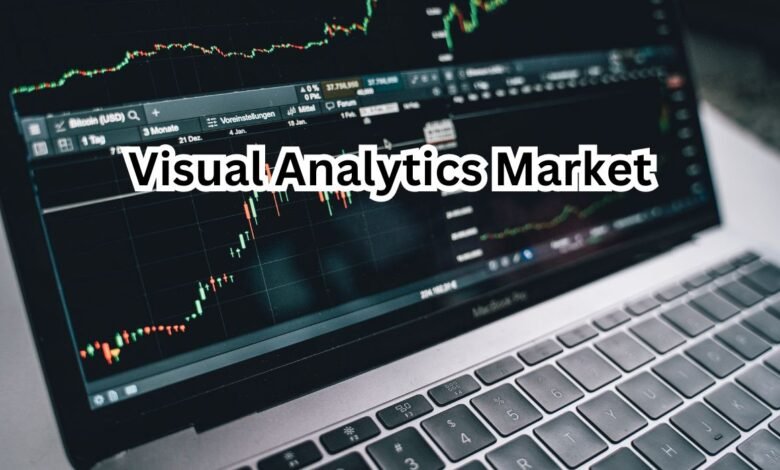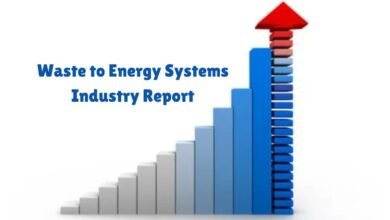Visual Analytics Market- Advancements Highlighted by Global Industry Analysis and Forecast (2023-2029)
Discover advancements in the Visual Analytics Market with insights from global industry analysis and forecasts for 2023-2029.

Visual analytics constitutes a pivotal segment within the broader domain of data science, focusing on the visual representation of data to enhance analytical reasoning. By amalgamating data analysis with interactive visualizations, it enables users to comprehend complex datasets and derive actionable insights effectively. This methodological approach is instrumental in transforming raw data into intuitive, graphical formats that facilitate the identification of patterns, trends, and correlations that might remain obscured in traditional data analysis.
The significance of visual analytics spans across various industries, including finance, healthcare, retail, and manufacturing. Its importance is underscored by the growing volume, velocity, and variety of data generated in today’s digital landscape. Through advanced tools and techniques, such as dashboards, heat maps, and geographical information systems (GIS), visual analytics aids in the swift and accurate interpretation of data, thereby empowering organizations to make informed, data-driven decisions. This capability is crucial in an era where strategic decision-making is increasingly dependent on real-time data insights.
Moreover, visual analytics bridges the gap between data scientists and business stakeholders. By converting complex data analyses into accessible visual formats, it democratizes data insights, allowing non-technical users to engage with and interpret data. This inclusivity fosters a collaborative environment where data-driven strategies can be developed and implemented more efficiently.
In conclusion, visual analytics stands as a transformative tool in the modern data-centric world. By leveraging advanced visualization techniques, it not only simplifies the comprehension of intricate data but also enhances the overall decision-making process. As we delve deeper into the visual analytics market, understanding these foundational concepts will provide a solid framework for exploring the latest trends, innovations, and forecasted developments from 2023 to 2029.
Current Market Trends and Key Drivers
The visual analytics market is experiencing significant growth, spurred by several prominent trends and key drivers. These factors are shaping the industry and driving forward the adoption of visual analytics solutions across various sectors.
One of the most notable trends is the increasing adoption of big data. As organizations generate vast amounts of data, the need for tools that can transform this data into actionable insights has become paramount. Visual analytics provides an effective means to interpret large data sets, making it easier for businesses to identify patterns, trends, and anomalies.
Another critical trend is the rise of artificial intelligence (AI) and machine learning (ML). These technologies are being integrated into visual analytics tools to enhance their capabilities. AI and ML enable advanced data processing and predictive analytics, allowing organizations to make more informed decisions based on historical data and future projections.
Several key drivers are propelling the visual analytics market forward:
- Need for Insightful Data Visualization: Organizations are increasingly recognizing the importance of data visualization in making complex data comprehensible. Effective data visualization helps in better decision-making and strategy formulation.
- Proliferation of IoT Devices: The Internet of Things (IoT) has led to an explosion in the volume of data generated by connected devices. Visual analytics tools are essential for managing and analyzing this data to derive meaningful insights.
- Demand for Real-Time Data Analysis: In today’s fast-paced business environment, the ability to analyze data in real-time is crucial. Real-time data analysis enables organizations to respond swiftly to changing market conditions and emerging opportunities.
These trends and drivers are collectively contributing to the rapid expansion of the visual analytics market. As technology continues to advance, the adoption of visual analytics solutions is expected to grow, offering enhanced capabilities for data-driven decision-making.
Visual Analytics: Technological Advancements and Innovations
The visual analytics market has witnessed significant technological advancements and innovations over recent years, driving its adoption across various industries. One of the major breakthroughs is the development of new software tools that enhance data visualization capabilities. These tools offer advanced features such as real-time data processing, interactive dashboards, and predictive analytics, allowing organizations to make data-driven decisions more effectively.
Another noteworthy innovation is the integration of augmented reality (AR) and virtual reality (VR) into visual analytics. AR and VR technologies provide immersive experiences, making it easier for users to visualize complex data sets in three-dimensional space. This integration enhances the interpretability of data, enabling users to gain deeper insights and make more informed decisions. For instance, industries such as healthcare and manufacturing are leveraging AR and VR to visualize intricate processes and improve operational efficiencies.
Advancements in user interface (UI) design have also played a crucial role in the evolution of visual analytics. Modern UI designs focus on user-centric approaches, ensuring that the tools are intuitive and easy to use. Features like drag-and-drop functionality, customizable dashboards, and seamless integration with other data sources have become standard. These improvements not only enhance user experience but also broaden the accessibility of visual analytics tools to non-technical users, democratizing data insights across organizations.
Below is a table comparing some of the latest technologies and their key features in the visual analytics market:
| Technology | Key Features |
|---|---|
| Real-time Data Processing Tools | Interactive dashboards, predictive analytics, real-time alerts |
| Augmented Reality (AR) | Immersive experiences, 3D data visualization, enhanced interpretability |
| Virtual Reality (VR) | 3D space visualization, immersive analytics, improved decision-making |
| Advanced User Interface (UI) Designs | Drag-and-drop functionality, customizable dashboards, intuitive use |
These technological advancements and innovations are reshaping the visual analytics market, making it more dynamic and user-friendly. As new technologies continue to emerge, the capabilities of visual analytics tools will expand, further solidifying their role in modern data analysis and decision-making processes.
Market Forecast (2023-2029)
The visual analytics market is poised for substantial growth from 2023 to 2029, driven by the increasing demand for data visualization tools across various sectors. According to industry reports, the market size is projected to reach USD 15.2 billion by 2029, up from USD 7.5 billion in 2023, reflecting a compound annual growth rate (CAGR) of 12.3%. This growth is underpinned by the rising adoption of big data and the need for real-time analytics to drive decision-making processes in businesses.
Despite the positive outlook, several challenges could impede the market’s expansion. These include data privacy concerns, the high cost of advanced analytics tools, and the scarcity of skilled professionals proficient in visual analytics. Nevertheless, continuous advancements in artificial intelligence (AI) and machine learning (ML) are expected to mitigate some of these challenges by enhancing the capabilities and usability of visual analytics platforms.
Regionally, North America is anticipated to dominate the visual analytics market due to the early adoption of advanced technologies and the presence of key market players. However, the Asia-Pacific region is expected to exhibit the highest growth rate, driven by the rapid digital transformation in countries like China, India, and Japan. Government initiatives promoting data-driven decision-making and the increasing number of tech startups in the region further bolster this growth.
Key players in the visual analytics market, including Tableau Software, QlikTech International AB, and Microsoft Corporation, are continuously innovating to maintain their competitive edge. These companies are focusing on integrating AI and ML capabilities into their solutions to provide more intuitive and powerful analytics tools. Additionally, strategic partnerships and acquisitions are common strategies employed by these market leaders to expand their product portfolios and enter new markets.
- Another vote surprise! Dissent grows in RBI that has more ‘elbow room
- Short Term Investment Analysis
- (MAG) Long Term Investment Analysis
Visual analytics market is set for robust growth over the forecast period, driven by technological advancements and increasing demand for data-driven insights. While challenges persist, the overall outlook remains positive, with significant opportunities for growth and innovation in the sector.



